There have been many things in 2016. Google's alpha algorithm defeated Li Shishi in the Go game, and the blockchain achieved rapid development. Governments around the world are investing heavily in smart cities. As in previous years, I will provide you with big data trends for the coming year, before I provided big data trends for 2014, 2015 and 2016. 2017 is expected to be a year of big data milestones. The hype of big data is finally over, so we can finally get started with big data. This is why I call 2017 Smart Year. So, which big data trends in 2017 will have an impact on your organization? Let's take a look at the seven big trends of 2017 big data.
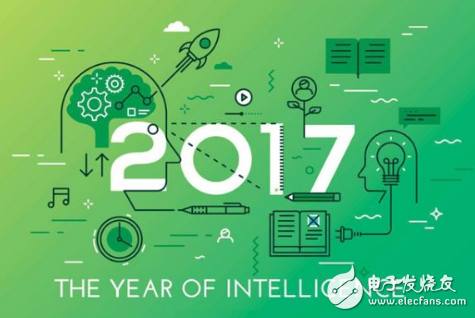
In 2016, with the attention of many media, the blockchain has developed rapidly in the field of distributed technology, which can change organizations and society to a large extent. Many organizations are exploring blockchain solutions. The R3 alliance, which includes more than 70 of the world's largest banks, seeks to invest nearly $60 million in the development of its respective blockchain platform. Although four well-known banks have left the alliance, this still shows that banks are serious about further exploring this technology.
However, transaction settlement is not the biggest opportunity for blockchain technology, and its real possibility is to record smart contracts on the blockchain. Smart contracts are still traditional contracts, but are recorded in code. It is similar to the form described by IFTTT, but is much more complicated than the latter. When blockchains are linked together, new forms of organization can be created, such as decentralized autonomous organizations.
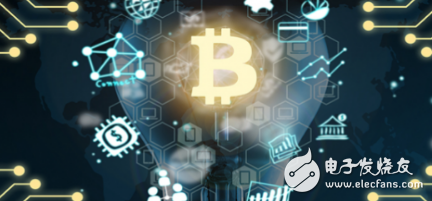
The most well-known smart contract platform is Ethereum. Ethereum is a decentralized application platform (DApps) that runs completely programmatically without any possibility of fraud, censorship or third party interference. While Ethereum is still a very young platform and faces some challenges in dealing with involuntary complex crossovers, the opportunities for connecting irreversible smart contracts on platforms like Ethereum are enormous. Several startups are developing similar platforms such as Synereo, Maidsafe or the latest Ardor platform. They are all trying to build a decentralized Internet. In 2017, we will see the growth of these platforms, and of course we may also see some issues related to these platforms. However, decentralized Internet technology is slowly evolving and smart contracts will become an important part of Blockchain 2.0.
2. Deep learning becomes smarter, bringing us closer to general artificial intelligenceThe algorithm business has the potential to change society, and the development of algorithm technology in 2016 has significantly accelerated. The computer algorithm won the Go game, was able to translate the language it didn't understand, and even recognized the criminal by looking at the face image. Artificial intelligence won't stop there. In the next few years, we will increasingly move toward a form of general-purpose artificial intelligence, such as Siri.
General artificial intelligence is gradually becoming possible due to deep learning. Deep learning is a sub-area of ​​machine learning, inspired by the neural network of the human brain, whose purpose is to create artificial neural networks that can find patterns in large amounts of data. Deep learning is becoming more and more popular as scientists around the world have access to more powerful computing power and big data sets. So in 2017, we will see many deep learning applications that can have a major impact on our lives.
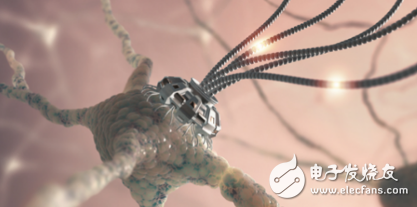
Deep learning algorithms are not trained by humans. Instead, they are exposed to massive data sets, millions of videos/images/articles, etc. Algorithms must determine how to identify different objects, sentences, images, and so on. Therefore, it can present solutions that humans cannot think of. For example, a set of algorithms has just developed an encryption algorithm that humans cannot decipher through patterns they never use. So if in 2017, you feel your computer is talking to you with a secret code, that might be true.
3. Conversational artificial intelligence: Smart applications will revolutionize the interactive experienceIn 2017, connected devices will become truly intelligent. Robots, self-driving cars or boats, drones and any other IoT products will become more and more intelligent. These devices will better understand the user and adapt the product or service to the needs of the user. Software updates will be done over the air, reducing the need to continuously purchase new products.
When these smart devices connect to smart applications such as Siri, Alexa, Viv, Cortana or Google Home, there are countless possibilities. Conversational artificial intelligence will enable advanced sessions with these smart applications. Currently, these apps are primarily used to control your phone, play music, or order pizza, but in 2017, this will change dramatically.
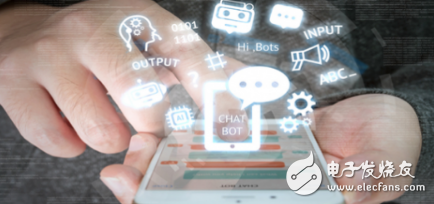
Alexa owners have been able to control their cars and turn on the engine at home, but soon you can control almost any device with your voice. In particular, the development of Viv created as the next generation of Siri will be able to do whatever you want. Again, as Microsoft CEO Satya Nadella said, these smart applications will be the next generation of applications. In 2017, we will see these smart apps blend with many IoT devices. As Amazon combines a new start-up accelerator focused on conversational artificial intelligence, conversational artificial intelligence will change the way your organization responds to customers.
4. Data leakage related to the Internet of Things will cause serious damageThe Internet of Things is constantly evolving. In 2016, approximately 6.5 billion devices were connected to the Internet and are expected to grow to 50 billion devices by 2020. In 2016, the Internet of Things-related distributed denial of service (DDoS) large-scale attack first appeared. Due to the lack of security of connected devices, this attack disrupted the Internet on the east coast of the United States. The botnet infects thousands of connected devices, such as routers or smart cameras, and uses them to launch DDoS attacks, disrupting the Internet for millions of people.
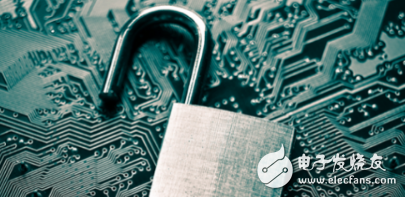
Unfortunately, more IoT-related attacks may occur in 2017. Simply put, IoT-connected devices are very vulnerable due to lack of security. Many organizations that develop smart toothbrushes, smart cameras, child smart dolls, or any smart connected device you can think of do not take data security seriously. Similarly, hackers can hijack your daughter's Barbie dolls to monitor your child or interfere with the network of millions. Governments and regulators must step in to force manufacturers of connected devices to bring their IoT devices to the highest level of protection because only one Internet connection can infect a network with a single virus and ruin the entire network.
REMOTE CONTROL SOCKET
Important Safeguards
When using any electrical appliance, in order to reduce the risk of fire, electric shock and/or injury to persons, basic safety precautions should always be follow8d. including:
• The appliance is for household and indoor use only.
• Before plugging in. check that the voitage on the rating label is the same as the mains supply.
• To protect against electric shock, do not immerse any part of the product in water or other liquid.
• This socket is intended for use by competent adults only and children should be supervised at all times.
• Do not use the socket for other than its intended use.
• This socket can be used by children aged from 8 years arxl above and persons with reduced physical, sensory or mental capabilities or lack of experience and knowledge if they have been given supervision or instruction concerning use of the appliance in a safe way and understand the hazards involved. Children shall not p<ay with the appliance Cleaning and user maintenance shall M be made by children without supervision.
• Children of less than 3 years should be kept away unless continuously supervised.
Children from 3 years and less than 8 years shall only switch on/off the appliance provided that it has been placed or installed in its intended normal operating position and they have been supervision or instruction concerning use of the appliance in a safe way and understand the hazards involved. Children aged from 3 years and less than 8 years shall not plug in. regulate and clean the appliance or perform user maintenance.
• Don't use this socket in the immediate surroundings of a bath, a shower or a swimming pool.
• In case of malfunction, do not try to repair the socket yourself, it may result in a fire hazard or electric shock
Do Not Exceed Maximum a680W
Place the LR44 batteries provided into the compartment in the back of the Remote Control, please insert as sho*/m in the back of the compartment to ensure the polarity is correct.
Programming Instructions
• Plug the Remoce Socket$($)lnto the wall socket(s) and switch on the mams supply, the red LED will flash every second.
• If the LED is not flashing press & hold the manual ON/OFF button for 5 seconds until it Hashes
•Press any ON switch on the Remote Control for approximately 2 seconds and the Remote Socket(s) learn the code. The LED will stop flashing top confirm the codehas been accepted.
• Any number of Remote Sockets can be programmed to one Remote Control ON button to create multiple switching.
• To programme o<her Remote Sockets on different Remote Control ON buttons repeat the prevous steps
• If the mains supply is turned off the Remote Sockets v/ill lose their code and it wil be necessary to re-pcogramme.
Operation:
• Plug your appliance(s) into the Remote Socket(s)
• Press the programmed ON or OFF button on the Remote Control to control the Remote Socket.
♦ The Remote Sockets can also be operated manually using its ON/OFF Button Trouble shooting
If a Remote Socket does not react to the Remote Control please check the followng:
♦ Low battery in tbo Remote Control
• Distance too large between the remote control and the recerver (ensure the range distance is no more than 20 clear Metres) and free from obstacle that may reduce the distance.
• If programming has not been successful, tum the power off and back on then follow the programming steps above.
How to decode
• Press the manual ONX)FF button for 5 seconds until the red LED flashes once per
second to confirm de-coding is successful
♦ Press the ALL OFF switch on the Remote Control for more than 3 seconds, the LED
flashes once per second to confirm (decoding successful.
Voltage: 240V-/50HZ
Max power rating: 3680W max.
Remote frequency:
Remote range:
Battery Type:
433.92MHz
230 Metres
Button Cell 2x1.5V LR44 =
Please check with your local waste management service authority regarding regulations for the safe disposal of the batteries. The batteries should never be placed G municipal waste.
Use a battery d^posal facility if available
M
For eioctncal products sold within the European Community. At the end of the electrical products useful life, it should not be disposed of wth household waste. Please recycle faaMies exist. Check with your Local Authonty or retailer for recycling advice.
C€
remote socket,remote power socket,remote control plugs,remote plug socket
NINGBO COWELL ELECTRONICS & TECHNOLOGY CO., LTD , https://www.cowellsocket.com